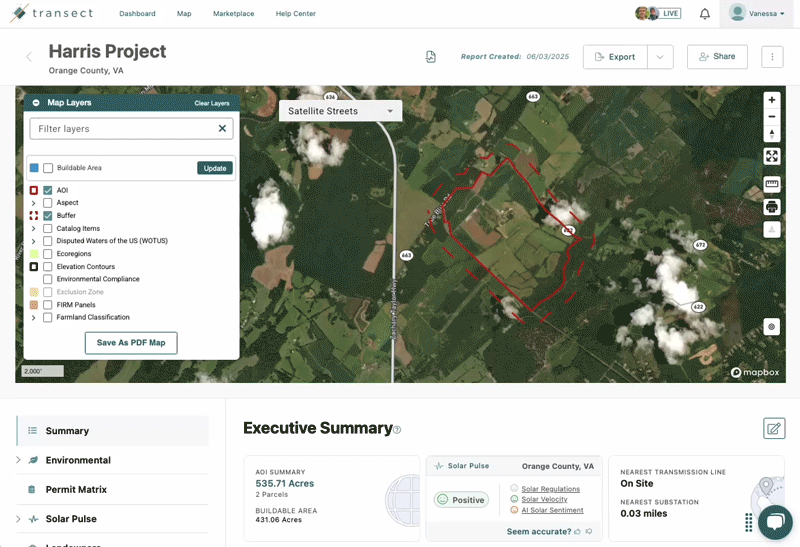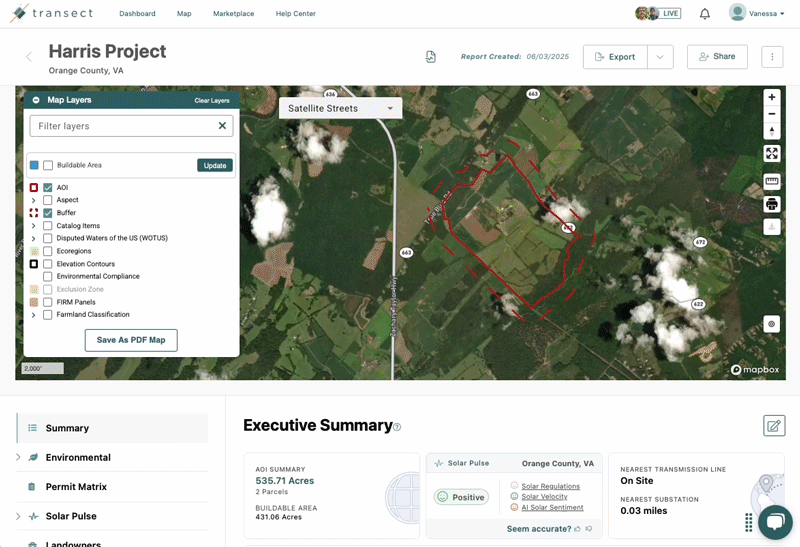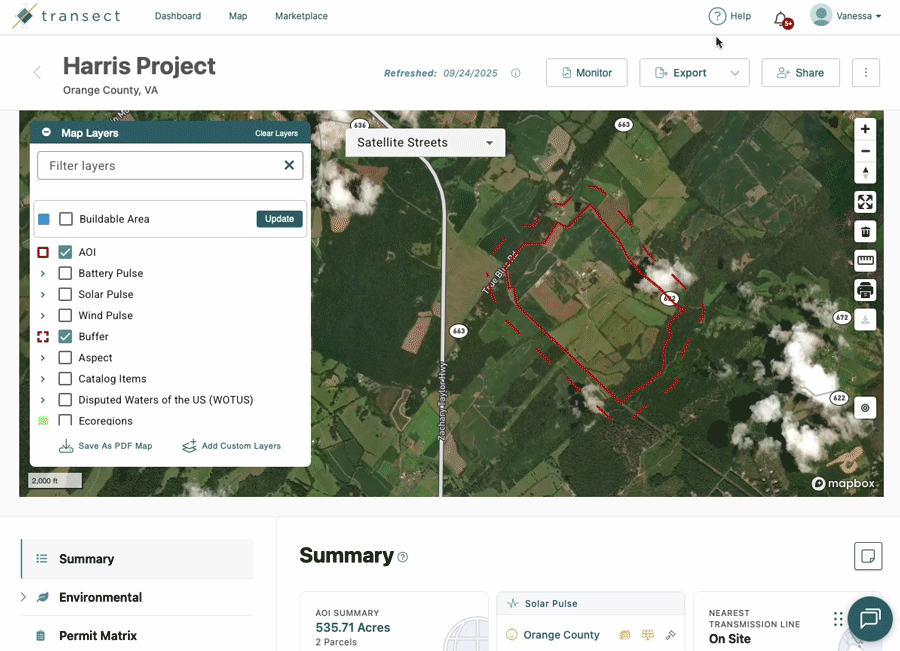Exporting a Transect Report
Learn how to customize and export your Transect Report.
Transect reports can be exported into different formats that best suit your organization's needs. You can easily export your report data to PDF, KML, or create a file to upload to Terabase.
In this article, you'll learn how to:
- Export Map Layers
- Export PDF Reports
- Export Landowner Information
- Export Terabase Information
- Create an Export Template
Please note that exports may take several minutes to download and depend on the size and complexity of the area of interest.
Only Report Owners and Collaborators can export a Transect Report. Check out this article for more information on project-level permissions.
Exporting Map Layers

- From the Dashboard, open an existing Transect report.
- Click the Export dropdown in the upper right corner.
- Select Map Layers.
- Drag and drop your preferred layers to the 'Selected Map Layers section', or select an export template.
- Select the Generate Map Layers dropdown and choose to export to KML, SHP, or Autocad.
Your export will generate in the background and you'll receive a notification via email and the bell icon when it's complete.
Exporting PDF Reports

- From the Dashboard, open an existing Transect report.
- Click the Export dropdown in the upper right corner.
- Select PDF.
- Drag and drop your preferred layers to the 'Selected Report Layers section', or select an export template.
- Select Generate PDF.
Your export will generate in the background and you'll receive a notification via email and the bell icon when it's complete.
Exporting Landowner Information
- From the Dashboard, open an existing Transect report.
- Click the Export dropdown in the upper right corner.
- Select Landowner Information (CSV).
Your Landowner export will automatically be downloaded to CSV format.
Exporting Terabase Information
Once you've created a Buildable Area, you can export it to Terabase for additional due diligence.
- From the Dashboard, open an existing Transect report.
- Click the Export dropdown in the upper right corner.
- Select Terabase (Plant Predict).
A KML containing your AOI's buildable area will automatically be downloaded that can then be uploaded to Terabase.
Creating an Export Template
If you frequently use the same layers, you can save them as a template to automatically include them in each export. If you'd like to have templates shared across your organization, your administrator can activate the setting following the steps in this article, or you can contact support.

- To create a template:
- Click the "Select or create a template" dropdown and select Create Template.
- Drag and drop your preferred layers to the "Selected Map Layers" section.
- When finished, enter a template name and then select Save Template.
- To edit a template:
- Select the applicable template from the dropdown.
- Click the pencil icon to enable editing mode.
- Drag and drop any additional layers, or modify the template name.
- When finished, select Save.
- To delete a template:
- From the dropdown, hover over the applicable template.
- Select the trash can icon and confirm the deletion by selecting Delete Template.
Click here to learn how to create a custom PDF map to include in your export!
